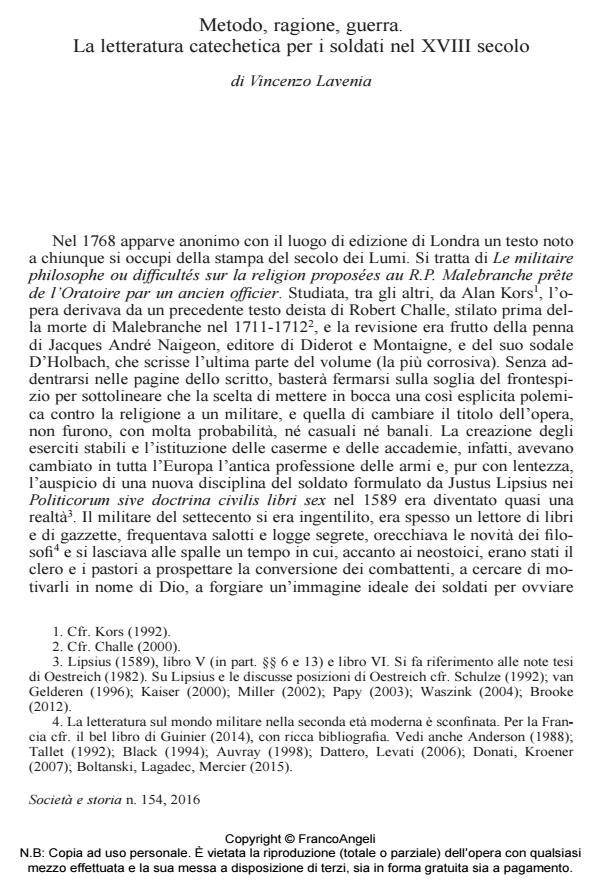Metodo, ragione, guerra. La letteratura catechetica per i soldati nel XVIII secolo
Titolo Rivista SOCIETÀ E STORIA
Autori/Curatori Vincenzo Lavenia
Anno di pubblicazione 2017 Fascicolo 2016/154
Lingua Italiano Numero pagine 19 P. 767-785 Dimensione file 71 KB
DOI 10.3280/SS2016-154008
Il DOI è il codice a barre della proprietà intellettuale: per saperne di più
clicca qui
Qui sotto puoi vedere in anteprima la prima pagina di questo articolo.
Se questo articolo ti interessa, lo puoi acquistare (e scaricare in formato pdf) seguendo le facili indicazioni per acquistare il download credit. Acquista Download Credits per scaricare questo Articolo in formato PDF

FrancoAngeli è membro della Publishers International Linking Association, Inc (PILA)associazione indipendente e non profit per facilitare (attraverso i servizi tecnologici implementati da CrossRef.org) l’accesso degli studiosi ai contenuti digitali nelle pubblicazioni professionali e scientifiche
Il saggio analizza una serie di testi del XVIII secolo destinati ai cappellani militari, agli ufficiali e ai soldati comuni, comprando la produzione a stampa e le ordinanze di diversi paesi dell’Europa, cattolica e protestante. Partendo dalla nascita del genere dei catechismi per i soldati nel XVI secolo, esso mostra come dopo Westphalia, con l’istituzione delle caserme e una disciplina militare più formalizzata, i regolamenti recepirono l’impulso educativo della letteratura cristiana per i soldati, mentre quella stessa letteratura divenne più neutrale dal punto di vista ideologico, più mondana e più patriottica. Più tardi la catechesi per i soldati dovette i fare i conti con l’Illuminismo, di cui tentò di assorbire gli aspetti più compatibili, mutando atteggiamento dopo gli anni ottanta del Settecento come effetto della radicalizzazione di una parte della cultura filosofica, della chiusura reazionaria delle Chiese e infine della Rivoluzione. Fu allora che tornarono in auge gli appelli alla guerra santa abbandonati nella catechesi militare nel corso del XVIII secolo.
Parole chiave:Guerra, religione, disciplina militare, catechismi, Illuminismo, rivoluzione.
- Quale storia della società? Uno sguardo sull'epoca moderna Paola Bianchi, in SOCIETÀ E STORIA 178/2023 pp.711
DOI: 10.3280/SS2022-178005
Vincenzo Lavenia, Metodo, ragione, guerra. La letteratura catechetica per i soldati nel XVIII secolo in "SOCIETÀ E STORIA " 154/2016, pp 767-785, DOI: 10.3280/SS2016-154008